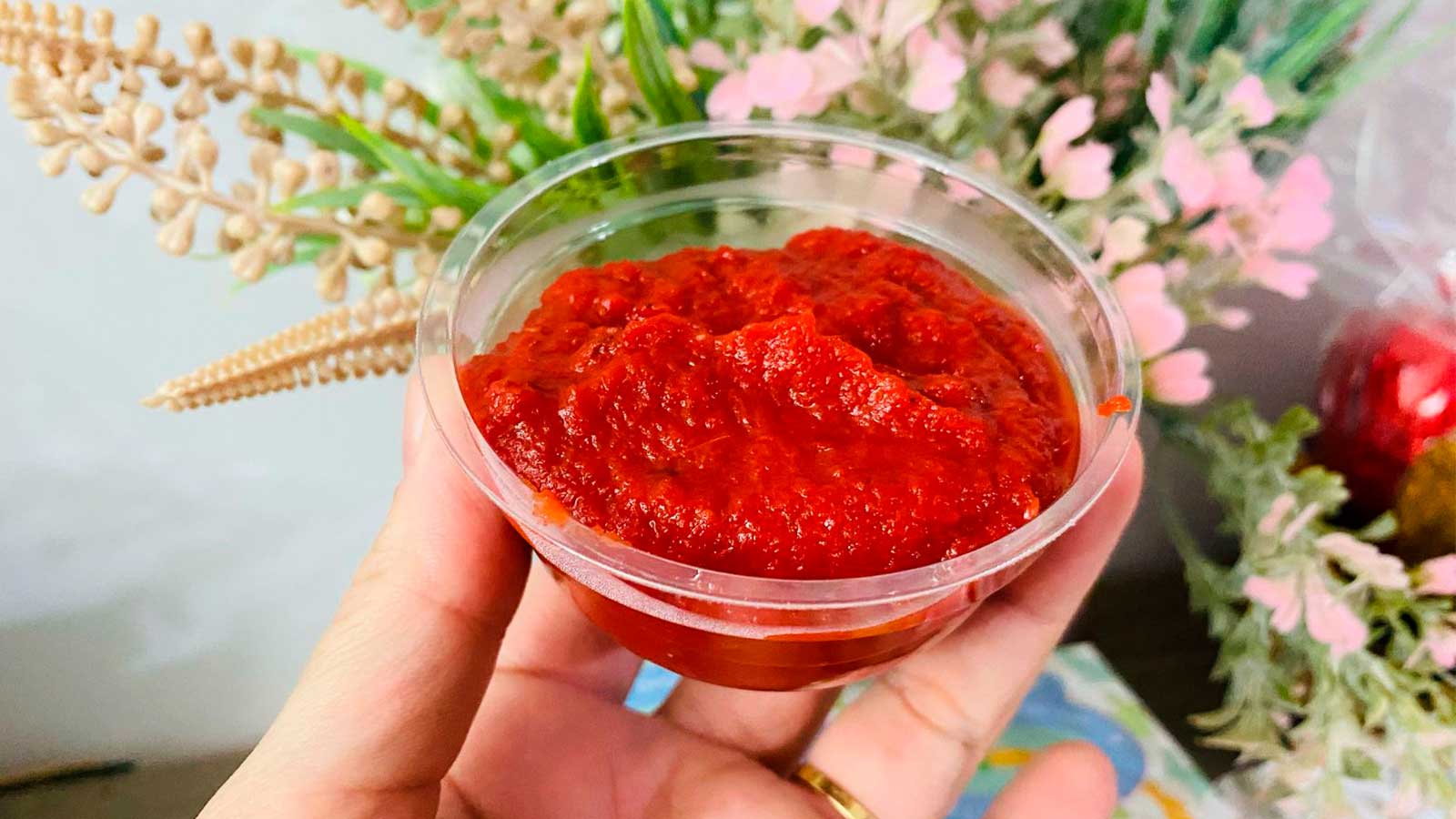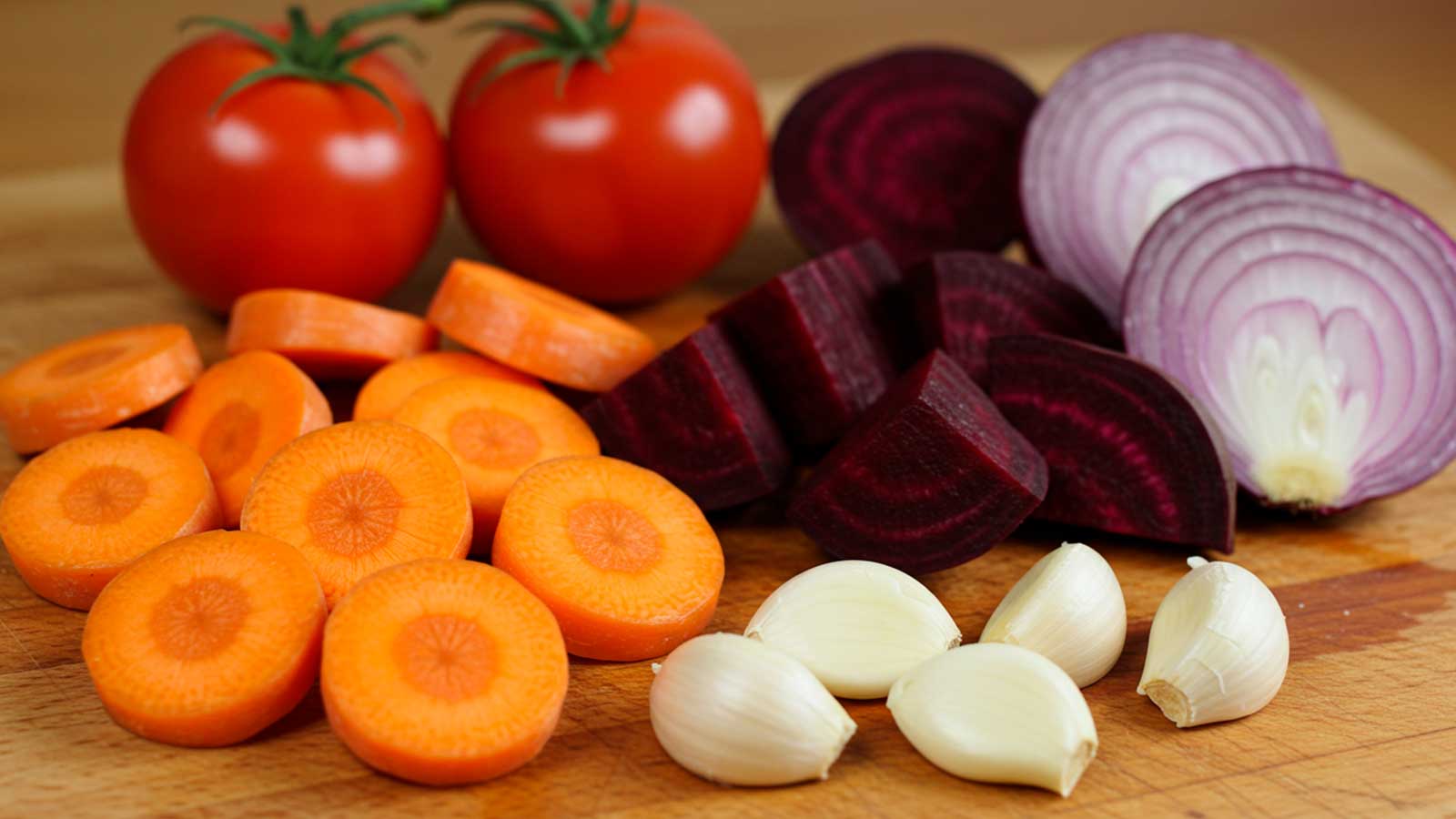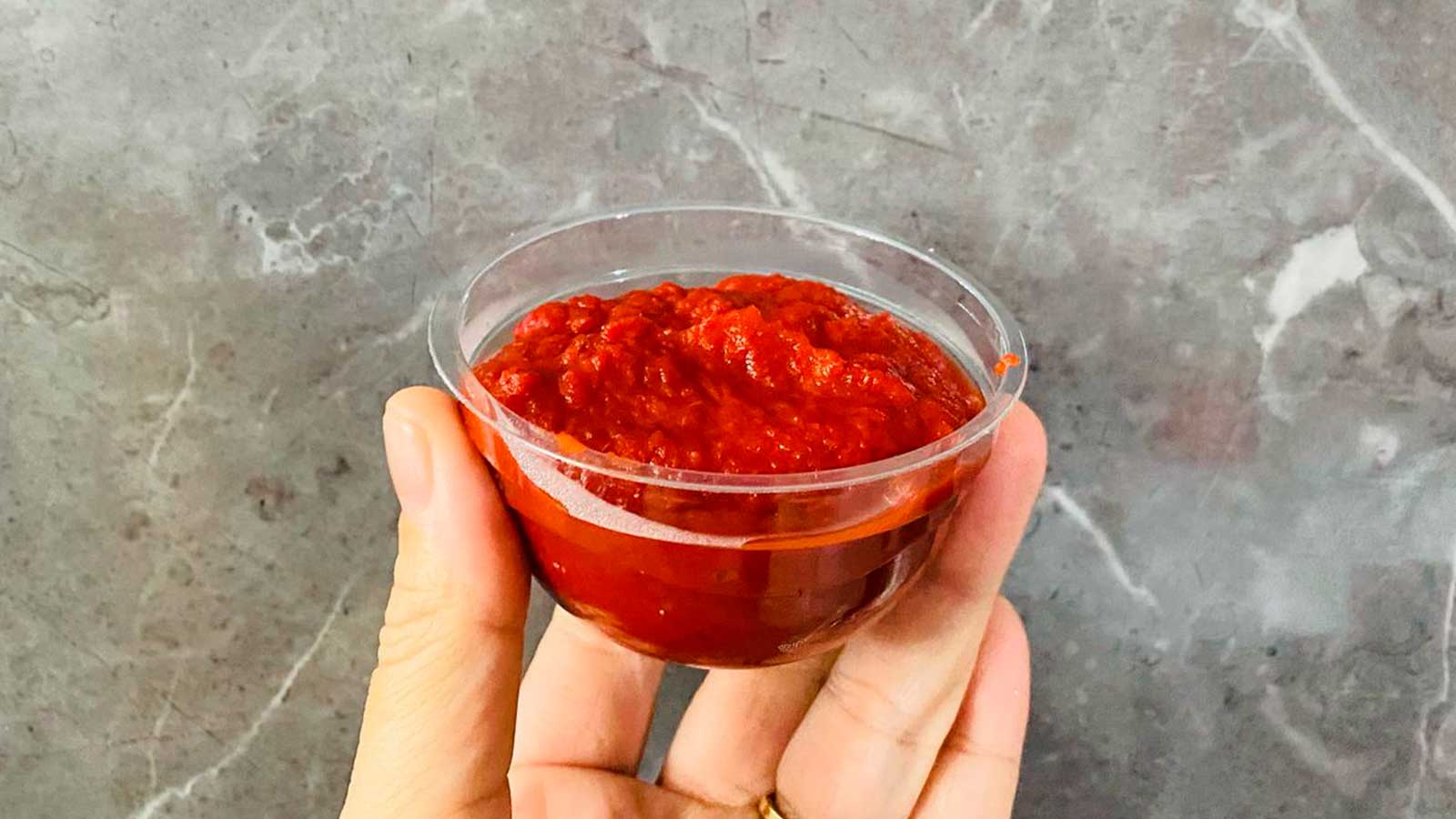Tomato Paste
Have you ever tried making tomato paste at home? Besides being much tastier than the industrial versions, it is free of preservatives and artificial additives. Ideal for those seeking a more natural and homemade touch in everyday recipes, the tomato paste made in the oven is thick, with an intense color and an aroma that wins you over from the first use.
This version is perfect for those who want to prepare their own tomato sauce and freeze portions to always have it on hand. And best of all: it’s cheaper, healthier, and yields a lot!
In this article, you will learn how to prepare the classic tomato paste with simple ingredients, as well as receive special tips, amazing variations, and suggestions on how to use it in your recipes.
Complete Recipe for Homemade Tomato Paste
The base of this preparation is fresh, natural, and accessible ingredients. The secret is in the oven time, which enhances the flavor of each component and transforms everything into an incredibly thick tomato paste.
Ingredients
- 1 kg of ripe tomatoes
- 1 medium onion
- 2 cloves of garlic
- 1/2 small beetroot (to enhance the color)
- 1/2 medium carrot (to soften the acidity)
Preparation Method
- Wash all the ingredients thoroughly.
- Cut the tomatoes, carrot, beetroot, and onion into medium pieces.
- Peel the garlic cloves.
- Place everything in a large baking tray and bake in a preheated oven at 180 °C for about 40 to 50 minutes or until the vegetables are very soft.
- Remove from the oven, let cool slightly, and blend everything in a blender or food processor until a smooth cream forms. If it becomes too thick, add a little water.
- Strain through a sieve if you prefer a smoother paste.
- Store in sterilized glass jars or in ice cube trays to freeze in portions.
Simple as that! And the flavor… oh, the flavor! It’s something that industrial versions will never achieve.

Golden Tips for a Perfect Tomato Paste
Below, we have gathered valuable tricks that further elevate the quality of your homemade tomato paste:
- Use a mix of tomatoes: combine Italian tomatoes, Débora, or Carmen to balance sweetness, acidity, and yield. This combination enriches the flavor of the tomato paste.
- Remove excess seeds: if you prefer a milder flavor and a smoother texture, remove some of the seeds from the tomatoes before baking. This helps to avoid bitterness in the paste.
- Add olive oil after blending: once finished, add a drizzle of extra virgin olive oil to help preserve and give a glossy finish to the tomato paste.
- Season only when using: avoid adding salt, pepper, or herbs during the base preparation. This way, the paste can be used in various recipes and you can season it according to the dish.
- Use stainless steel or glass baking trays: avoid common aluminum pans, as they may react with the acidity of the tomato. It is ideal to use trays made of refractory glass, stainless steel, or non-stick.
- Stir halfway through the baking time: this ensures even cooking of all the ingredients, making the paste more homogeneous and flavorful.
- Do not add water: even if it seems dry, the tomatoes naturally release liquid. Adding water may result in a runny and less concentrated tomato paste.
- Store properly: place it in well-sterilized glass jars and cover while still warm. This helps form a natural vacuum, increasing its durability in the refrigerator.
- Label your frozen jars: note the preparation date and the quantity in each jar or frozen cube. This makes it easier when defrosting and using in everyday meals.
- Make in large quantities: since the process is simple and yields well, take the opportunity to prepare plenty of tomato paste at once and freeze the excess for later weeks.

Creative Variations of Tomato Paste
Want to add a personal touch to the recipe? Here are some ideas you can try and adapt to your taste:
Tomato Paste with Basil
Add fresh basil leaves before blending. It gives an incredible fragrance and pairs perfectly with pasta and pizzas.
Tomato Paste with Bell Pepper
Add a piece of red bell pepper along with the other ingredients. The flavor becomes thicker and slightly smoky.
Spicy Tomato Paste
For those who enjoy a spicy kick, a seedless chili pepper (like dedo-de-moça) makes all the difference. It can be baked along with the other ingredients.
Tomato Paste with Fine Herbs
Rosemary, thyme, and oregano are great allies for giving a more aromatic profile to the tomato paste. Use them dried or fresh.
Rustic Tomato Paste
If you prefer a chunkier texture, simply do not strain after blending. Ideal for recipes where an artisanal look makes all the difference.

Where to Use Homemade Tomato Paste?
The possibilities are many! Tomato paste is a versatile and flavorful ingredient. See where it can shine in your kitchen:
Classic Tomato Sauce
The most traditional use. Simply sauté onion and garlic in olive oil, add the tomato paste, and season with salt, pepper, and basil. Perfect for pasta and lasagna!
Pizza Sauce
Mix the tomato paste with olive oil, oregano, and crushed garlic. Spread over the pizza dough before adding other ingredients.
Stroganoffs and Stews
Use a spoonful of tomato paste to give a rich color and intense flavor to meats, poultry, and vegetables when cooked.
Pie and Empanada Fillings
Add the tomato paste to the sautéed filling to make it moister and more flavorful.
Soups and Broths
A small amount transforms the flavor of vegetable soups, bean soups, or chickpea soups.
Casserole Rice and Risottos
Mix with homemade broth and use as the liquid base for preparing rice or risotto. It’s simply divine!
Why Make Your Own Tomato Paste?
Still wondering if it’s worth preparing your own tomato paste? Below are the main reasons to start today:
- More flavor: the homemade result is much thicker, sweeter, and more aromatic. The flavor is fresh and intense, very different from industrial products.
- No preservatives or additives: homemade tomato paste is 100% natural. You avoid dyes, preservatives, and artificial ingredients found in ready-made jars.
- Real savings: making it at home is much cheaper than buying ready-made jars. With few ingredients, you produce a large volume at a much lower cost.
- Versatility in the kitchen: homemade tomato paste can be used in dozens of recipes – from sauces and pizzas to soups, pies, and fillings.
- Ease of freezing: the paste can be stored in small portions, like ice cubes, making it very convenient for everyday use.
- Total food utilization: very ripe tomatoes, which might otherwise be discarded, turn into a tasty and nutritious tomato paste. It’s a practical way to avoid waste.
- Control of flavor: you adjust everything to your taste. You can make it sweeter, more intense, milder, or even spicy, depending on your preference.
- No waste: since you freeze in portions, you only use what you really need. This prevents leftover sauce from sitting in the refrigerator for days.
- Pride in homemade creation: besides being healthier, homemade tomato paste is a source of pride. Knowing you made it yourself brings a unique satisfaction and even impresses at meals.
- Sustainability: by reusing nearly spoiled tomatoes, you contribute to conscious consumption and reduce your production of organic waste.
FAQ – Frequently Asked Questions
Can I use any type of tomato?
Yes, but the best for tomato paste are Italian tomatoes or peeled tomatoes. They have less water and more pulp.
How long does homemade tomato paste last in the refrigerator?
If stored in a sterilized, tightly sealed jar, it lasts up to 5 days in the refrigerator.
How long can I freeze it?
When frozen, the tomato paste lasts up to 3 months, retaining its flavor and quality.
Do I need to add salt or olive oil?
It is not necessary, but if you prefer, you can add them after blending. This adds more flavor and makes it ready to use in recipes.
Can I cook it on the stove?
Yes, but the result will be different. In the oven, the flavor is more concentrated and the ingredients bake slowly, caramelizing and becoming sweeter.
What if the tomato paste becomes too liquid?
You can simmer it on low heat to reduce until reaching the desired texture, stirring constantly to prevent sticking.
Final Considerations
Making your own tomato paste is a delicious, economical, and rewarding experience. You gain more control over the ingredients, avoid preservatives, and still obtain an incredibly flavorful product to use in your tomato sauce, on pizzas, pasta, and many other recipes.
Enjoy the convenience of freezing in portions and always have a quality homemade tomato paste on hand. Experiment, innovate with variations, and discover the pleasure of cooking with ingredients made by you.
READ ALSO:
- Roast Chicken: Recipe, Perfect Marinade and Variations
- Cabbage Roll: Learn This Delicious Recipe
- Brazilian Fried Chicken: Classic Recipe, Tips and Secrets
JOIN OUR RECIPE GROUP
WE ARE ON PINTEREST
I hope you enjoyed it